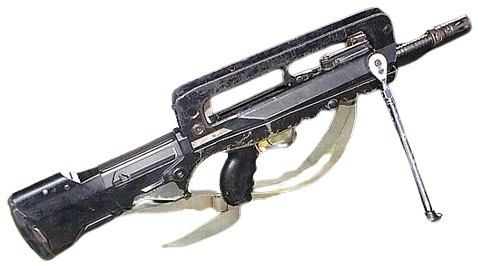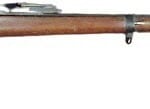
FAMAS Rifle: A Complete History, Specifications, and Performance Review
Introduction
The FAMAS rifle—officially designated Fusil d'Assaut de la Manufacture d'Armes de Saint-Étienne—is a bullpup assault rifle that has served as the primary service rifle of the French military for decades. Known for its distinctive design, lever-delayed blowback operation, and high rate of fire, the FAMAS has become an icon of French military ingenuity.
Developed in response to France's need for a modern select-fire combat rifle, the FAMAS Rifle has played a crucial role in numerous conflicts, from the Gulf War to Afghanistan. This article explores the history, variants, specifications, performance, strengths, and weaknesses of this unique firearm, offering the most authoritative and complete guide on the subject.
Origins and Development of the FAMAS
The Need for a New Rifle
In the 1960s, the French military sought to replace its aging MAS-49/56 battle rifle with a more modern assault rifle. With NATO standardizing around the 5.56×45mm cartridge, France initially considered adopting a foreign design, such as the M16. However, to maintain domestic arms production, French engineers developed an indigenous rifle: the FAMAS F1.
The Manufacture d'Armes de Saint-Étienne (MAS), a historic French arms manufacturer, led the development of this rifle. The FAMAS RIfle was officially adopted by the French Army in 1978, entering service with all branches of the French military, including the Foreign Legion and special operations forces.
Innovative Lever-Delayed Blowback System
One of the most distinctive features of the FAMAS Rifle is its lever-delayed blowback action, a unique operating system rarely seen in modern assault rifles. Instead of using a gas-operated system like the M16 or AK-47, the FAMAS employs a mechanically delayed blowback system inspired by the German StG 45(M) and later CETME/HK G3 rifles.
This system provides several benefits:
- Fewer moving parts, reducing mechanical complexity.
- High cyclic rate of fire (around 1,000 rounds per minute for the F1 model).
- Lower recoil compared to other rifles of its class.
- Enhanced accuracy in short bursts due to minimal muzzle rise.
However, this system is highly sensitive to ammunition type, leading to reliability issues when using standard NATO brass-cased ammunition, which became a major drawback.

FAMAS Variants and Evolution
Over the years, the FAMAS Rifle has undergone several modifications to improve its reliability, adaptability, and compatibility with NATO standards. Here are the primary models:
FAMAS F1 (1978-1995)
- First production model, chambered for 5.56×45mm NATO.
- 25-round proprietary magazine (not STANAG compatible).
- Integrated bipod for stability.
- Cyclic rate: 1,000–1,100 RPM.
- Effective range: 300 meters (iron sights), 450 meters with optics.
- Used extensively in the Gulf War, Yugoslav Wars, and peacekeeping missions in Africa.
FAMAS G1 (Prototype, Unadopted)
- Experimental version with improved ergonomics.
- Never widely issued.
FAMAS G2 (1994-Present)
- Improved reliability and enhanced materials.
- 30-round STANAG magazine compatibility, addressing a major flaw of the F1.
- Better optics compatibility.
- Reduced rate of fire (~950 RPM) for improved control.
- Adopted by the French Navy and select units.
FAMAS Valorisé (Modernization Program)
- Upgraded FAMAS F1 rifles with Picatinny rails.
- Improved bipod, optics mounting, and reinforced polymer stock.
- Not a completely new model but a mid-life upgrade for existing rifles.

Performance and Combat Effectiveness
The FAMAS Rifle has proven itself in diverse combat conditions, from the deserts of the Middle East to the jungles of Central Africa. Its unique design provides both advantages and limitations.
Advantages of the FAMAS
✅ Compact Bullpup Design – The FAMAS Rifle is significantly shorter than conventional rifles while retaining a full-length barrel, making it ideal for urban and close-quarters combat. ✅ High Rate of Fire – The rapid cyclic rate provides superior firepower, particularly in short-range engagements. ✅ Built-in Bipod – Increases stability for prone or supported firing. ✅ Accurate 3-Round Burst Mode – A well-designed burst mode improves ammunition efficiency and recoil control.
Criticisms and Limitations
❌ Magazine Compatibility Issues – The original F1 model’s proprietary magazine created logistics issues in NATO operations. ❌ Ammunition Sensitivity – The lever-delayed blowback system requires specific steel-cased ammunition, making it unreliable with standard NATO brass-cased rounds. ❌ High Maintenance Costs – With the closure of MAS in 2002, spare parts became expensive, accelerating its replacement.
Replacement: Why France Chose the HK416
By the 2010s, the FAMAS Rifle was showing its age. While still a competent rifle, its ammunition sensitivity, high maintenance costs, and outdated ergonomics made it less competitive than modern rifles.
In 2016, the French Army selected the HK416F, a piston-driven rifle manufactured by Heckler & Koch, to replace the FAMAS. The HK416 offers:
- Superior reliability with all NATO-standard ammunition.
- STANAG magazine compatibility.
- Integrated modern optics, rails, and modular enhancements.
- Lower maintenance costs and better logistical support.
Legacy and Impact of the FAMAS
Despite being phased out of frontline service, the FAMAS remains an iconic weapon of the French military. Its distinctive shape, unique operating system, and historic service record cement its place in firearms history. It is still used by:
- French National Police and Gendarmerie.
- Foreign Legion training units.
- Reserve and secondary military forces.
Collectors and firearm enthusiasts continue to seek out the FAMAS, making it one of the most recognized bullpup rifles worldwide.
Conclusion: The FAMAS in Retrospect
The FAMAS remains one of the most distinctive bullpup rifles ever designed, blending French engineering with battlefield practicality. While not without flaws, its high firepower, compact size, and historical significance make it an enduring symbol of French military innovation.
With its replacement by the HK416, the FAMAS is transitioning into history, but its influence on firearm design and its role in military conflicts will not be forgotten.
Read more about the FAMAS rifle and other French weapons here:

If you know of any forums or sites that should be referenced on this listing, please let us know here.



